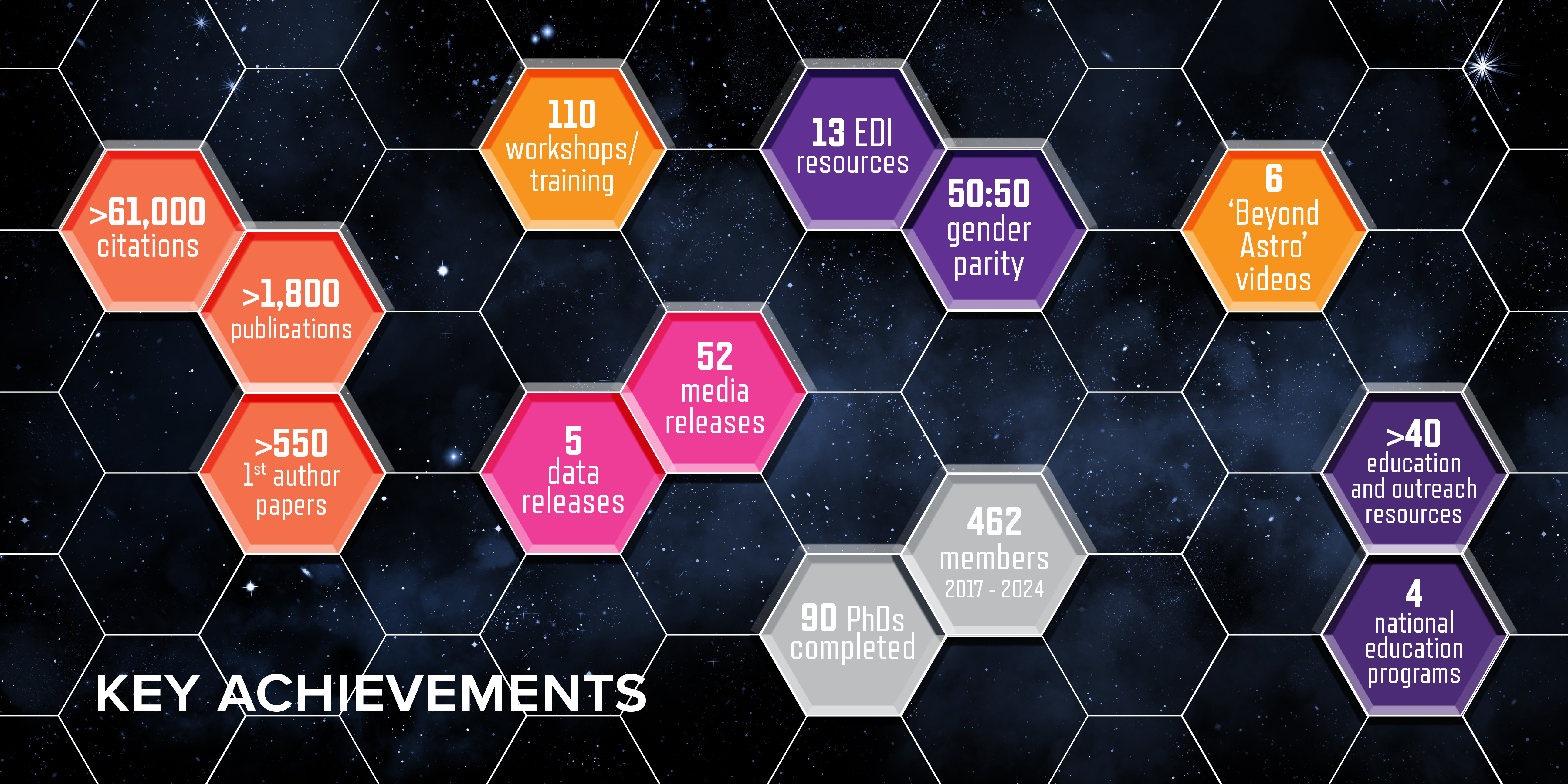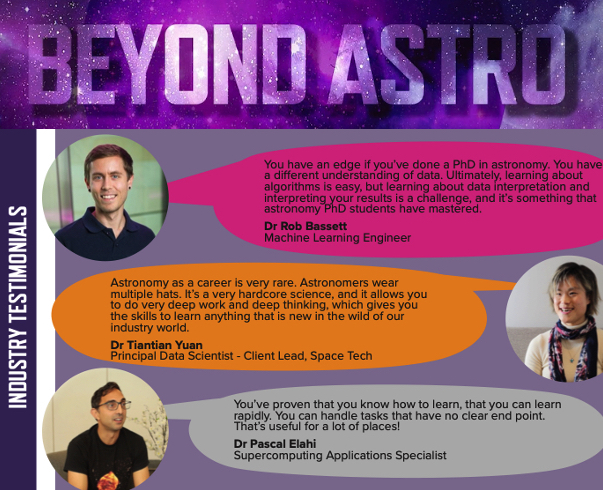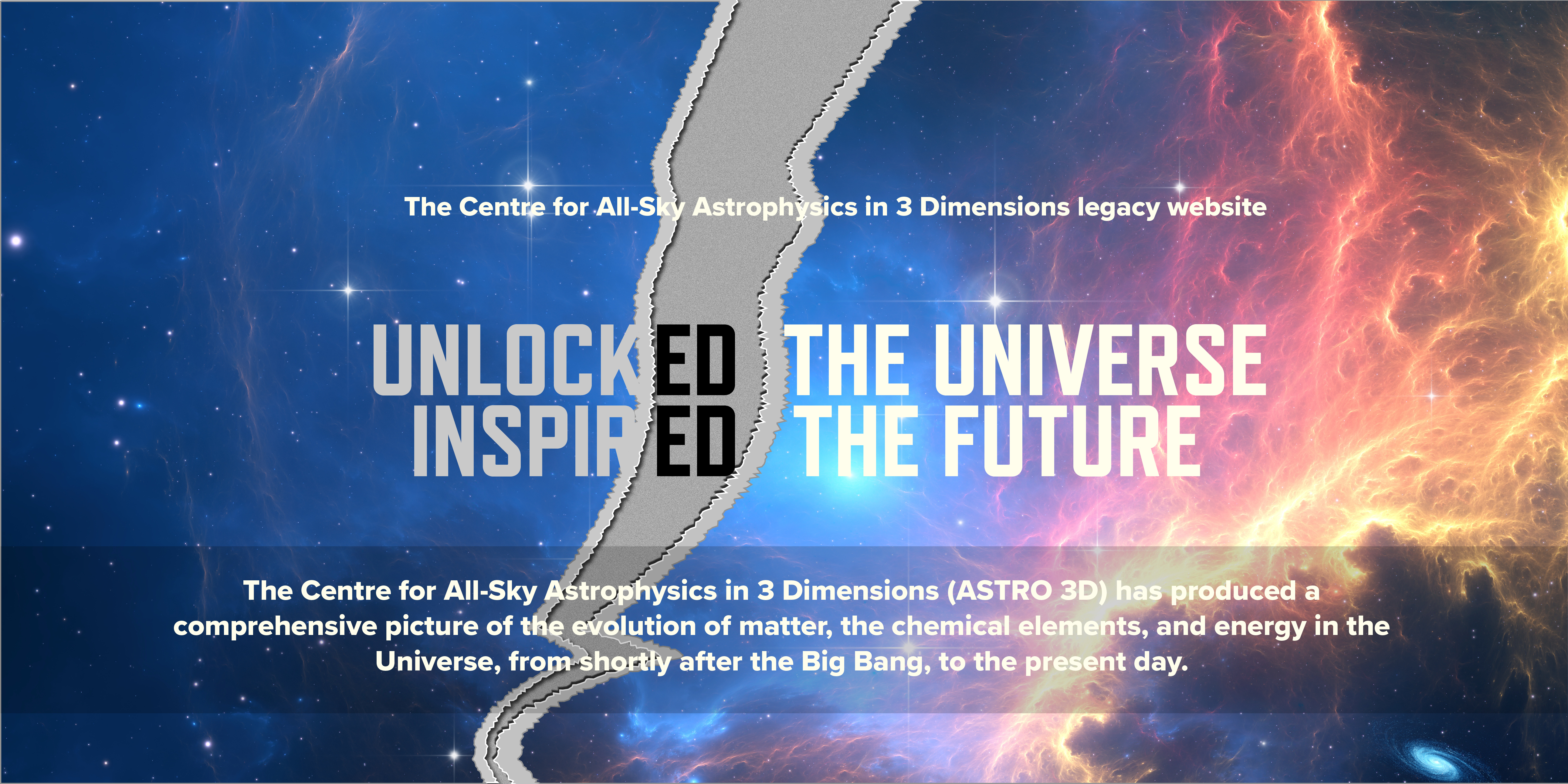
The Centre has successfully met its four original objectives, with our achievements detailed below.
Objective 1. Transform our understanding of the Universe and how we got here.

ASTRO 3D has conducted ground-breaking new 3-Dimensional surveys alongside an observationally driven theory program. The Centre developed new data intensive astronomy infrastructure within a unified and cohesive collaborative and administrative structure.
This research has been translated into over 1800 high-impact publications (including over 550 first author papers) with broad and far-reaching international dissemination of our results.
Our most highly cited papers include GALAH Data Release 3 (Buder et al. 2021), WALLABY survey (Koribalski et al. 2020), Murchison Wide-Field Array Epoch of Reionisation (Trott et al. 2020) and SAMI Survey (Croom et al. 2021).
Significant datasets include DUVET (Cameron et al. 2021), AGEL (Tran et al. 2022) and XQR-30 (Davies et al. 2023). Ongoing data releases include the MAGPI survey (Foster et al. 2021) and the FLASH survey (Yoon et al. submitted).
Objective 2. Build and maintain the infrastructure, skills and expertise required to maximise Australia's investment in the new era of mega-scale optical and radio telescopes.

ASTRO 3D surveys have served as vital stepping stones for future leadership with the Square Kilometre Array (SKA), Giant Magellan Telescope and European Southern Observatory (ESO).
The long-term investment and continuity provided by a Centre of Excellence has maximised the national benefit of these precursor telescopes.
The 10-year ESO strategic partnership wasn’t even in place when the ASTRO 3D proposal was written, but we have made extremely good use of ESO telescope programs with ASTRO 3D PhD students and postdocs being awarded 59% of all Australian time in its first 5 years. This was achieved by delivering workshops on scientific proposal writing and providing networking space in which collaborative projects thrive. The integration of theory and simulations has enabled the creation of powerful mock observational data.
Image: SKAO, ICRAR
Objective 3. Inspire, train and mentor the next generation of diverse Australian scientific leaders.
ASTRO 3D has inspired students to study science, technology, engineering and mathematics (STEM) through a variety of new teacher and school education programs and an ambitious suite of national public outreach campaigns.
At the beginning of the Centre, we set an ambitious goal of 50% women across all levels. This was achieved in 5 years through a broad range of evidence-based diversity initiatives (Kewley et al. 2023).
Our Indigenous Work Experience programs have inspired Aboriginal and Torres Strait Islander school students to pursue tertiary STEM study.
Objective 4. Provide young Australian scientists with transferrable skills for the modern workforce.

ASTRO 3D has been at the forefront of training the next generation of Australian astrophysicists in 21st century skills.
With our focus on data intensive science, our alumni have pursued a broad range of career options outside astrophysics, including market analysis, population statistics, medical science, bioinformatics, genomics, and commercial sector data analytics.
Taking advantage of our alumni network, we created Beyond ASTRO, a series of videos delving into the journeys of individuals whose stories explore their motivations and their paths to their new careers.



















